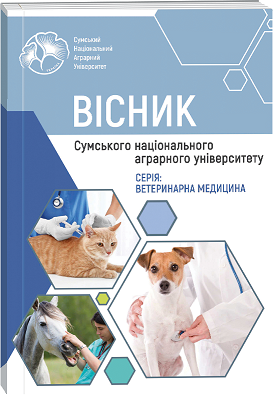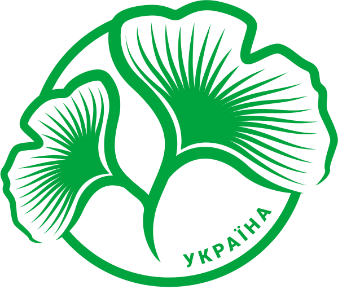ГІСТОЛОГІЧНІ ЗМІНИ В СТРУКТУРІ РЕПРОДУКТИВНОЇ СИСТЕМИ ТРУТНІВ В УМОВАХ КОНТАМІНАЦІЇ АМЕРИКАНСЬКИМ ГНИЛЬЦЕМ (PAENIBACILLUS LARVAE)
Анотація
В анатомії розвитку та гістологічних дослідженнях репродуктивної системи як комах в загалому, так і окремо трутнів медоносної бджоли були досить добре задокументовані ще попередніми вченими. Відомо, що вперше репродуктивна система була описана вченим Яном Сваммердамом у його власне посмертній публікації ще в 18 столітті, де було писано що репродуктивні органи складаються з парних статевих залоз, провідних проток і канальців, деяких додаткових статевих залоз і власне ендофалуса. Такі вчені, як Зандер, Бішоп та Снодгрес описували анатомічну особливість розвитку сім’яників трутнів ще на стадії личинки та їх гістологічну структуру, вчений а Лаго в 2020 році описав більше детальний атлас відповідно до процесу сперматогенезу і власне розвиток сім’яників трутнів до їх виходу з комірки. Слід зауважити, що функціональними одиницями сім’яників трутнів є власне канальці яєчок, також вони мають назву тестикулярні фолікули або навіть сперматозоїдами. Відом що фактично сотні канальців входять в сім’явиносні протоки через анатомічно розташовані окремі сім’явиносні канальці, які в свою чергу проходять разом із базилярним канальцем і проходять до апікального канальця, фактично на периферію сім’яника. Зандер описав що ще на ранній личинковій стадії розвитку вже спостерігаються трубочки сім’яника. Сперміогенез у трутнів відбувається фактично на завершальній стадії розвитку лялечки або так званої особини фарату. В цей період сперматозоїди утворюються із сперматид. Але дослідження нормальної гістології не дає повної картини розвитку репродуктивної системи трутня. Як правило, вони не досить добре охарактеризовані в літературних джерелах. Слід зазначити, що в літературних даних не описано вплив різного типу захворювань бджіл на розвиток репродуктивної системи трутня. В досліджені описано основні фази змін в тканинах під час статевого дозрівання в умовах контамінації американським гнильцем. Гістологічні зміни яєчка під час дозрівання характеризуються такими основними послідовними фазами: перша фаза характерна завершенням сперміогенезу, друга фаза виходу сперматозоїдів у просвіт трубок, наступна третя фаза показує відповідну прогресуючу атрофію фолікулярних клітин і власне остання фаза – повна атрофія і відповідно колапс. Тубулярні зміни відбуваються в базилярному напрямку до апікального, де сегменти, розташовані ближче до сім’явиносної протоки, є гістологічно більш зрілими, ніж відповідні апікальні сегменти. Крім того, слід зауважити, що своєрідна швидкість розвитку дозрівання репродуктивних органів може змінюватися з сезонним прогресуванням. Дане дослідження прогресуючої атрофії репродуктивної системи трутня може бути корисним для майбутніх селікцеонерів, так як гістологічне дослідження показує результат контамінації збудником гнильцевої хвороби який має фактично негативні результати і може вплинути на селекційні показники бджолиної сім’ї.
Посилання
2. Bauer, D. M., & Wing, I. S. (2016). The macroeconomic cost of catastrophic pollinator declines. Ecological Economics, 126, 1-13.
3. Belsky, J., & Joshi. (2019). Impact of biotic and abiotic stressors on managed and feral bees. Insects, 10(8), 233.
4. Bossert, S., Wood, T. J., Patiny, S., Michez, D., Almeida, E. A., Minckley, R. L., & Murray, E. A. (2022). Phylogeny, biogeography and diversification of the mining bee family Andrenidae. Systematic Entomology, 47(2), 283-302.
5. Brown, M. J., Dicks, L. V., Paxton, R. J., Baldock, K. C., Barron, A. B., Chauzat, M. P., & Stout, J. C. (2016). A horizon scan of future threats and opportunities for pollinators and pollination. PeerJ, 4, e2249.
6. da Santos, R. S., Carneiro, L. T., de Oliveira Santos, J. P., da Silva, M. M., de Oliveira Milfont. (2021). Bee pollination services and the enhancement of fruit yield associated with seed number in self-incompatible tangelos. Scientia Horticulturae, 276, 109743.
7. Eeraerts, M., Vanderhaegen, R., Smagghe, G., & Meeus, I. (2020). Pollination efficiency and foraging behaviour of honey bees and non-Apis bees to sweet cherry. Agricultural and Forest Entomology, 22(1), 75-82.
8. Eilers, E. J., Kremen, C., Smith Greenleaf, S., Garber, A. K., & Klein, A. M. (2011). Contribution of pollinator-mediated crops to nutrients in the human food supply. PLoS one, 6(6), 21-63.
9. Fenech, M., Amaya, I., Valpuesta, V., & Botella, M. A. (2019). Vitamin C content in fruits: Biosynthesis and regulation. Frontiers in plant science, 9, 2006.
10. Goulson, D., & Hughes, W. O. (2015). Mitigating the anthropogenic spread of bee parasites to protect wild pollinators. Biological Conservation, 191, 10-19.
11. Horth, L., & Campbell, L. A. (2018). Supplementing small farms with native mason bees increases strawberry size and growth rate. Journal of Applied Ecology, 55(2), 591-599.
12. Isaacs, R., Williams, N., Ellis, J., Pitts-Singer, T. L., Bommarco, R., & Vaughan, M. (2017). Integrated crop pollination: combining strategies to ensure stable and sustainable yields of pollination-dependent crops. Basic and Applied Ecology, 22, 44-60.
13. Kerr, J. T., Pindar, A., Galpern, P., Packer, L., Potts, S. G., Roberts, S. M. (2015). Climate change impacts on bumblebees converge across continents. Science, 349(64), 177-180.
14. Kisil, D. О. (2023). Funhitsydna diya tsyklichnykh peroksydiv na rist entomopatohennoho hryba ascosphaera apis. [Fungicidal action of cyclic peroxides on the growth of the entomopathogenic fungus ascosphaera apis]. Sumy: Bulletin of Sumy National Agrarian University. The series: Veterinary Medicine, 4 (63), 62-67 [in Ukrainian].
15. Kisil, D. О., & Nazarenko, S. М. (2023). Patomorfolohichni zminy kyshkivnyka bdzholy ta imunna vidpovidʹ na mikrosporydioz nozema apis. [Pathomorphological changes of the bee intestine and immune response to microsporidia nosema apis]. Sumy: Bulletin of Sumy National Agrarian University. The series: Veterinary Medicine, 3 (62), 44-49 [in Ukrainian].
16. Kwon, H., Kim, T. K., Hong, S. M., Se, E. K., Cho, N. J., & Kyung, K. S. Effect of household processing on pesticide residues in field-sprayed tomatoes. Food Science and Biotechnology, 24, 1-6.
17. Lago, D. C., Martins, J. R., Dallacqua, R. P., Santos, D. E., Bitondi, M. M., & Hartfelder, K. (2020). Testis development and spermatogenesis in drones of the honey bee, Apis mellifera. L. Apidologie, 51, 935-955.
18. Metz, B. N., & Tarpy, D. R. (2019). Reproductive senescence in drones of the honey bee (Apis mellifera). Insects, 10(1), 11.
19. Moors, L., Koeniger, G., & Billen, J. (2012). Ontogeny and morphology of the bulbus, part of the male reproductive organ in Apis mellifera carnica (Hymenoptera, Apidae). Apidologie, 43, 201-211.
20. Osterman, J., Theodorou, P., Radzevičiūtė, R., Schnitker, P., & Paxton, R. J. (2021). Apple pollination is ensured by wild bees when honey bees are drawn away from orchards by a mass co-flowering crop, oilseed rape. Agriculture, Ecosystems & Environment, 315, 107383.
21. Pitts-Singer, T. L., Artz, D. R., Peterson, S. S., Boyle. (2018). Examination of a managed pollinator strategy for almond production using Apis mellifera (Hymenoptera: Apidae) and Osmia lignaria (Hymenoptera: Megachilidae). Environmental Entomology, 47(2), 364-377.
22. Power, K., Martano, M., Altamura, G., & Maiolino, P. (2020). Histopathological findings in testes from apparently healthy drones of Apis mellifera ligustica. Veterinary Sciences, 7(3), 124.
23. Redhead, J. W., Dreier, S., Bourke, A. F., Heard, M. S., Jordan, W. C. (2016). Effects of habitat composition and landscape structure on worker foraging distances of five bumble bee species. Ecological Applications, 26(3), 726-739.
24. Snodgrass, R. E. (2018). Principles of insect morphology. Cornell University Press, 41, 202-221.
25. Suvarna, K. S., Layton, C., & Bancroft, J. D. (2018). Bancroft's theory and practice of histological techniques. Elsevier health sciences, 11, 20-41.
26. Tang, J., Quan, Q. M., Chen, J. Z., Wu, T., & Huang, S. Q. (2019). Pollinator effectiveness and importance between female and male mining bee (Andrena). Biology letters, 15(10), 20-47.
27. Turley, N. E., Biddinger, D. J., Joshi, N. K., & López-Uribe, M. M. (2022). Six years of wild bee monitoring shows changes in biodiversity within and across years and declines in abundance. Ecology and Evolution, 12(8), e9190.
28. Turley, N. E., Biddinger, D. J., Joshi, N. K., & López-Uribe, M. M. (2022). Six years of wild bee monitoring shows changes in biodiversity within and across years and declines in abundance. Ecology and Evolution, 12(8), e9190.
29. Wade, A., Lin, C. H., Kurkul, C., Regan, E. R., & Johnson. (2019). Combined toxicity of insecticides and fungicides applied to California almond orchards to honey bee larvae and adults. Insects, 10(1), 20.
30. Zattara, E. E., & Aizen, M. A. (2021). Worldwide occurrence records suggest a global decline in bee species richness. One Earth, 4(1), 114-123.

 ISSN
ISSN  ISSN
ISSN 



